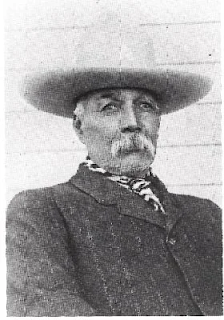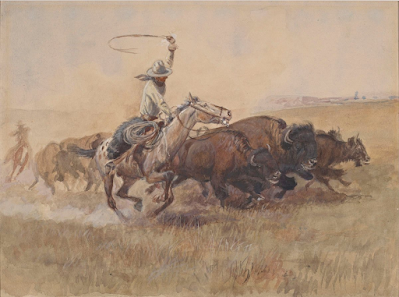Ever heard of the Great Roundup? Buffalo round up, that is...
The year was1884. A man named Michel Pablo, whose mother was a Blackfoot, envisioned a way to save an endangered species and eventually make some money. He decided to "ranch" bison.
 |
| Image from World Wildlife Fund |
Buffalo? Where did these wild animals come from, disappeared from the Great Plains like ther were? Why was he able to purchase them? It had to do with a second marriage, a little bigamy actually. A Flathead named Sam Walking Coyote had a wife from his own tribe. Away from home, he took a wife from the Blackfoot. When he had to go home, he captured some wild bison to use as a way to pacify the tribal council. He knew they would not approve of his taking another wife, not with the Jesuit influences over the council. It didn't work. They beat Walking Coyote and exiled him.
Fast forward some years. Those four animals had multiplied to 13. Pablo bought 13 animals from Walking Coyote.He turned them loose on the reservation and protected them. The land was considered free grazing area by the government, after all.
 |
| Michel Pablo, already in his seventies at the time of the "Great Roundup". |
Later, he bought another 25-30 animals from a different source. Pablo decided that the bison would populate on the grassy land of the reservation as long as they were protected, and by 1899 he had almost 300 buffalo. That became a problem when, in 1904, the US government decided to open the reservation land for settlement. Officials took away Pablo's right to free grazing.
Interesting, but why am I writing about this? It's the roundup that happened in 1907. Michel Pablo's herd totalled 800 and he had to sell. The story goes the US government. refused to buy them. Instead, Pablo accepted Canada's $130,000. That meant he had to get hundreds of head over a long and dusty trail to Ravalli, Montana. There, the buffalo would be loaded onto a train and shipped to Manitoba.
 |
| Watercolor on paper done by Charles Russell, 1909, titled Pablo's Buffalo Hunt |
His first try didn't go well. Buffalo could climb cliffs and escape from makeshift corrals. In the end, only 30 animals made it Ravalli. After that, Pablo made two decisions, First, he would only round up the calves and cows rather than the bulls. Also, he would hire the best of the best cowboys. That meant paying out the best money in the area.
 |
| Bison Trail 1908 by Charles Russell |
Even with all of the help he could want, Pablo spent five years capturing enough buffalo to fill his contract with Canada.


I hadn't heard of this event or Pablo. Thank you for the educational and entertaining post.
ReplyDelete